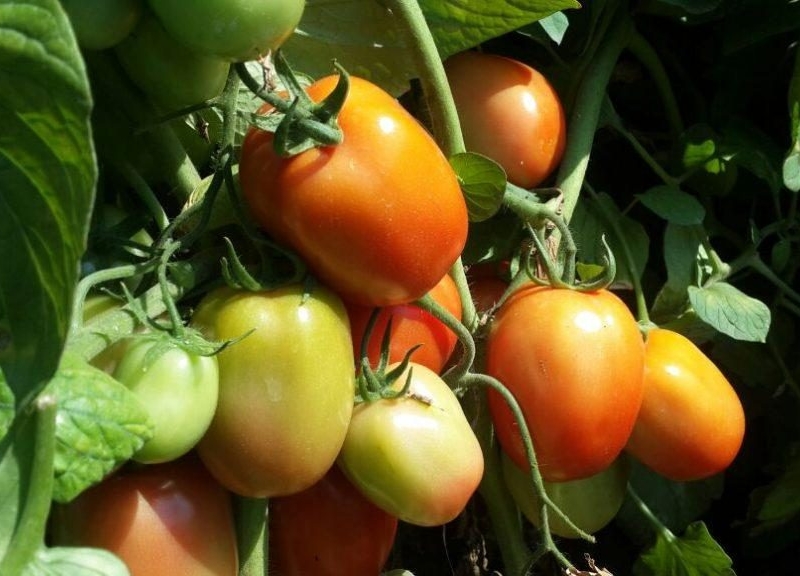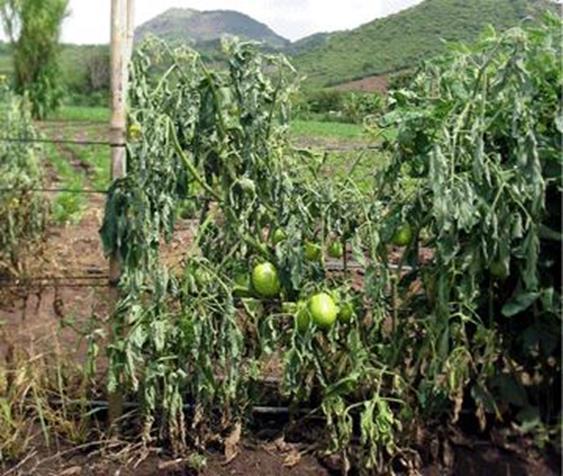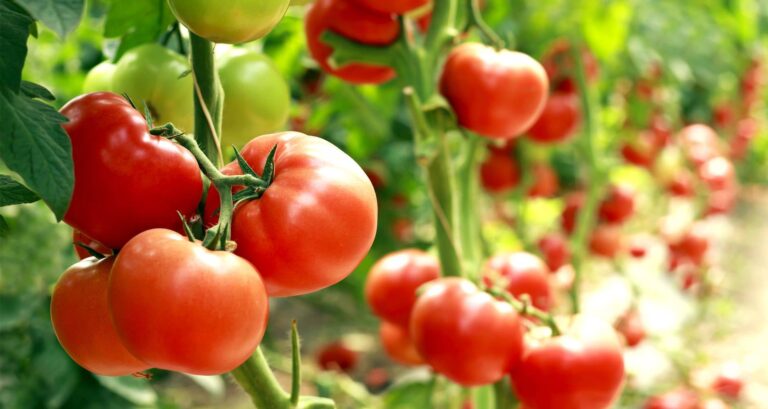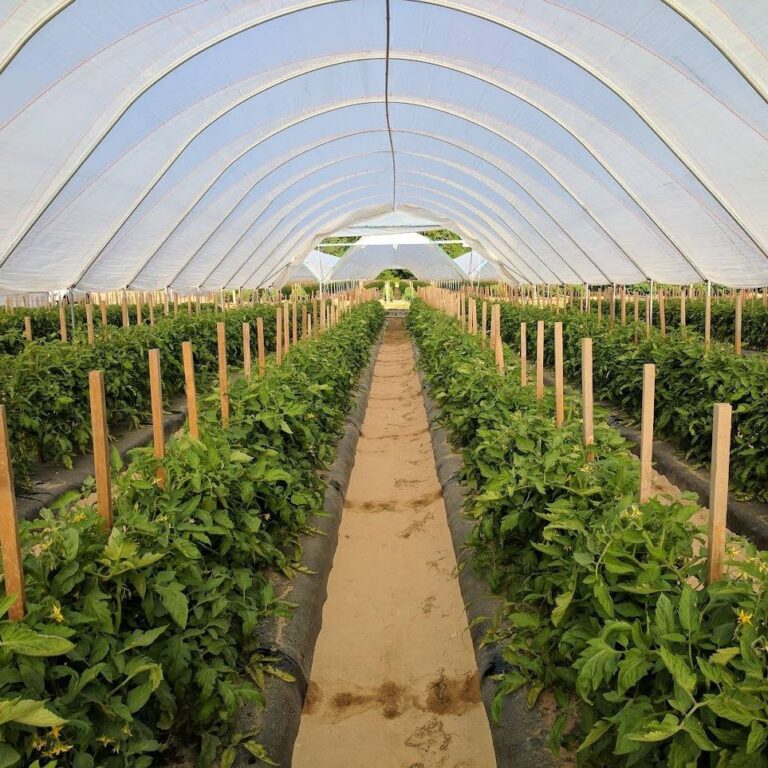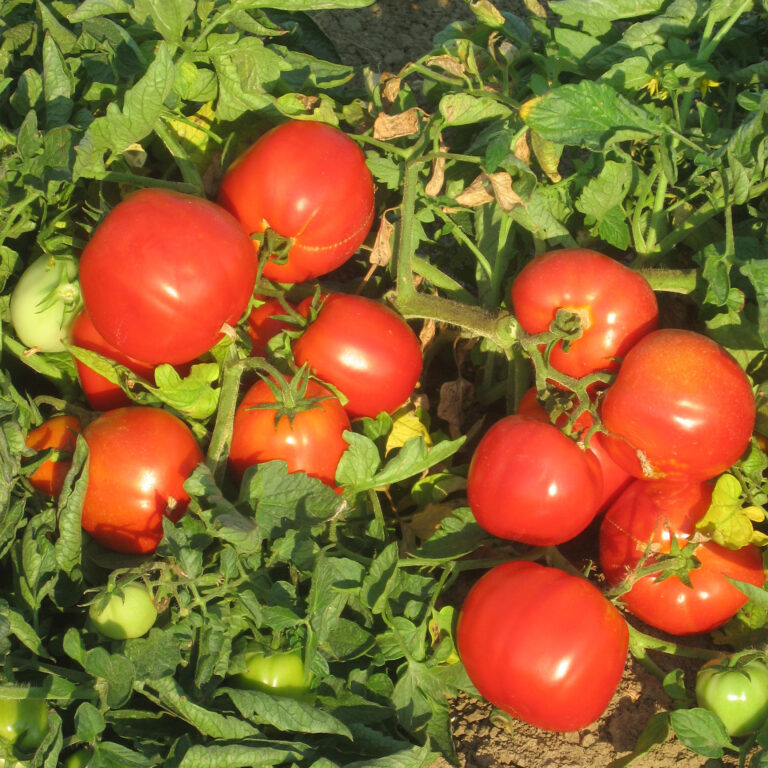Shanty F1 Tomato Yield Per Acre
The Shanty F1 tomato variety in Kenya offers a high yield potential of 40 to 50 tonnes per acre with each plant producing 4 to 6 kilograms of tomatoes.
It supports a density of up to 10,000 plants per acre and matures in about 75 days, providing farmers with quick returns and substantial harvests under optimal conditions.
Shanty F1 Tomatoes
Shanty F1 tomatoes are renowned for their vibrant red color, uniform size, and delicious taste. They have a slightly sweet, rich flavor that makes them ideal for fresh consumption, cooking, and processing.
This variety is indeterminate, meaning it continues to grow and produce fruit throughout the growing season.
Shanty F1 tomatoes are favored by growers due to their high yield, disease resistance, and adaptability to various growing conditions.
Shanty F1 Tomato Yield Per Acre
Yield Potential
One of the most attractive aspects of the Shanty F1 tomato variety is its remarkable yield potential. Under optimal growing conditions, farmers can expect a yield range of 40 to 50 tonnes per acre.
This high yield is attributed to the robust growth and prolific fruit production of the Shanty F1 plants, making it a lucrative option for commercial tomato farming.
Individual Plant Yield
Delving deeper into the yield dynamics, each Shanty F1 tomato plant can produce between 4 to 6 kilograms of tomatoes per harvest. This consistent and substantial yield per plant ensures that even small-scale farmers can achieve significant returns on their investment.
Plant Density
Another factor contributing to the impressive yield of Shanty F1 tomatoes is the optimal plant density. Farmers can plant up to 10,000 tomato bushes per acre, maximizing the use of available land and increasing overall productivity.
This density allows for efficient space utilization while ensuring that each plant receives adequate nutrients and sunlight for optimal growth.
Maturity and Characteristics
Maturity Time
Time is a critical factor in agricultural production, and Shanty F1 tomatoes offer a significant advantage in this regard. These tomatoes mature approximately 75 days after transplanting, allowing farmers to achieve quick returns on their investment. The relatively short maturity period also enables multiple cropping cycles within a year, further enhancing profitability.
Fruit Quality
Shanty F1 tomatoes are not only known for their high yield but also for their excellent fruit quality. The tomatoes are large, typically weighing between 120 to 160 grams each. They possess a firm texture, which reduces the risk of damage during handling and transportation.
Shanty F1 tomatoes have an extended shelf life, making them suitable for both local consumption and export markets. The combination of size, firmness, and longevity ensures that farmers can meet market demands effectively.
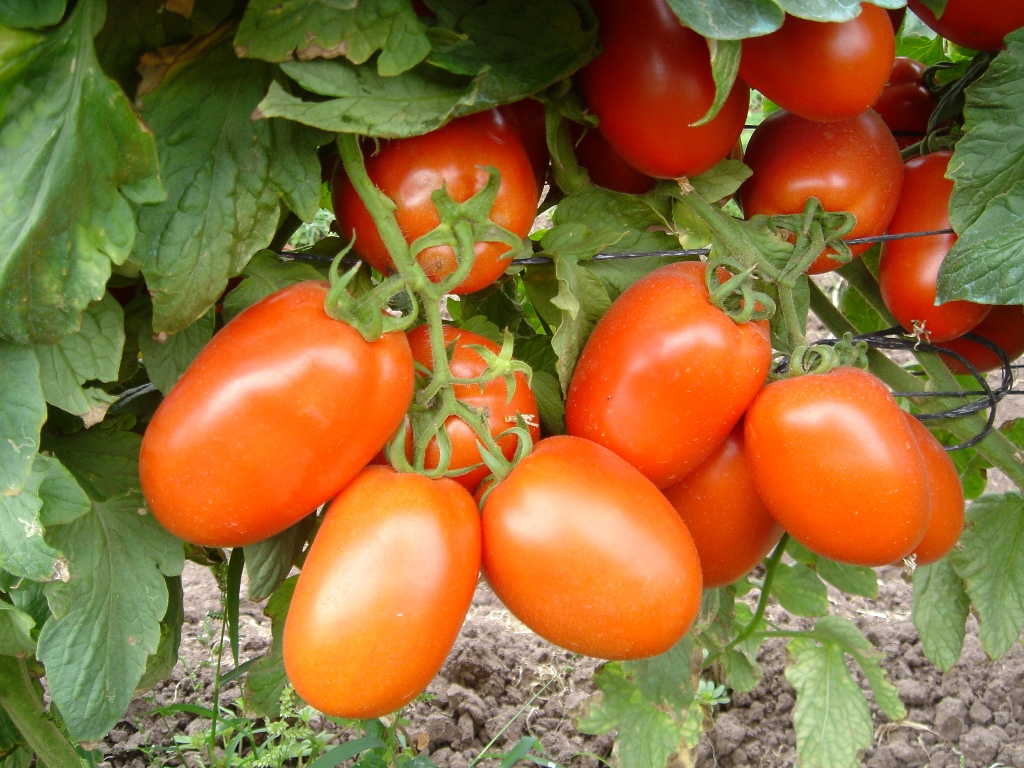
Disease Resistance
Common Diseases
One of the major challenges in tomato farming is the susceptibility of the plants to various diseases. However, Shanty F1 tomatoes have been bred for enhanced disease resistance, offering protection against several common diseases.
These include Tomato Yellow Leaf Curl Virus (TYLCV), Fusarium wilt, and bacterial spot. This resistance significantly reduces the risk of crop loss and ensures a more stable and reliable yield.
Cost Benefits
The disease resistance of Shanty F1 tomatoes translates into substantial cost benefits for farmers. By minimizing the incidence of disease, farmers can reduce expenses related to pest and disease management, such as the purchase of pesticides and fungicides.
This not only lowers production costs but also contributes to more sustainable and environmentally friendly farming practices.
Factors Affecting Yield
- Climate and Weather Conditions
Shanty F1 tomatoes thrive in warm, sunny climates with temperatures ranging between 70-85°F (21-29°C). Consistent sunlight and moderate temperatures are essential for optimal growth and fruit development. Excessive heat can cause flower drop, while prolonged cold can inhibit plant growth. Rainfall should be adequate but not excessive, as waterlogged soil can lead to root diseases and negatively impact yield.
- Soil Quality and Preparation
Soil health and fertility are paramount for successful tomato cultivation. Shanty F1 tomatoes prefer well-drained, loamy soil rich in organic matter.
A soil pH between 6.0 and 6.8 is ideal. Soil preparation should include testing and amending the soil to correct any nutrient deficiencies. Incorporating compost or well-rotted manure can enhance soil structure and fertility, promoting healthy root development and plant growth.
- Farming Practices
- Planting Techniques
Proper planting techniques are crucial for maximizing Shanty F1 tomato yield. Transplants should be spaced 18-24 inches apart in rows that are 3-4 feet apart.
This spacing allows for adequate air circulation and reduces the risk of disease. Planting should be done when soil temperatures are consistently above 60°F (15°C) to ensure good root establishment.
- Irrigation Methods
Effective irrigation is vital for the healthy growth of Shanty F1 tomatoes. Drip irrigation is the preferred method as it delivers water directly to the root zone, reducing water wastage and minimizing the risk of foliar diseases.
Irrigation should be consistent, providing about 1-1.5 inches of water per week, depending on weather conditions. It’s important to avoid overwatering, which can lead to root rot and other issues.
iii. Pest and Disease Management
Shanty F1 tomatoes are susceptible to various pests and diseases, including aphids, whiteflies, tomato hornworms, and fungal diseases like early blight and late blight. Integrated Pest Management (IPM) strategies, such as crop rotation, use of resistant varieties, and biological controls, can help manage these issues.
Regular monitoring and timely application of appropriate organic or chemical controls can prevent infestations and outbreaks, safeguarding plant health and yield.
Tips for Maximizing Yield
- Fertilization Strategies
Proper fertilization is essential for maximizing the yield of Shanty F1 tomatoes. A balanced fertilizer with equal amounts of nitrogen, phosphorus, and potassium (N-P-K) can support healthy growth.
During the early stages of growth, higher nitrogen levels encourage leaf and stem development. As the plants start flowering and setting fruit, a fertilizer higher in phosphorus and potassium can enhance fruit quality and yield.
Organic fertilizers, such as compost and fish emulsion, can also provide essential nutrients and improve soil health.
- Pruning and Training Techniques
Pruning and training Shanty F1 tomato plants can significantly influence fruit production. Removing suckers (the shoots that develop in the leaf axils) helps direct the plant’s energy towards fruit development.
Training the plants to a single or double stem system using stakes, cages, or trellises ensures good air circulation, reduces disease risk, and makes harvesting easier. Regularly removing diseased or damaged leaves and maintaining a tidy plant structure can further enhance productivity.
- Harvesting Methods
The timing and method of harvesting can impact the yield and quality of Shanty F1 tomatoes. Tomatoes should be harvested when they are fully ripe and have developed their characteristic color and flavor.
Regular harvesting encourages continuous fruit production and prevents overripe fruits from attracting pests and diseases. It is advisable to handle the fruits gently to avoid bruising and damage, which can reduce their market value and shelf life.
Conclusion
In conclusion, the Shanty F1 tomato variety offers high yield potential and excellent quality, making it a favorite among growers. Understanding the factors that influence yield, such as climate, soil quality, and farming practices, is essential for maximizing production.
By implementing effective fertilization, pruning, irrigation, and pest management strategies, farmers and gardeners can achieve optimal yields and enjoy the delicious fruits of their labor.
